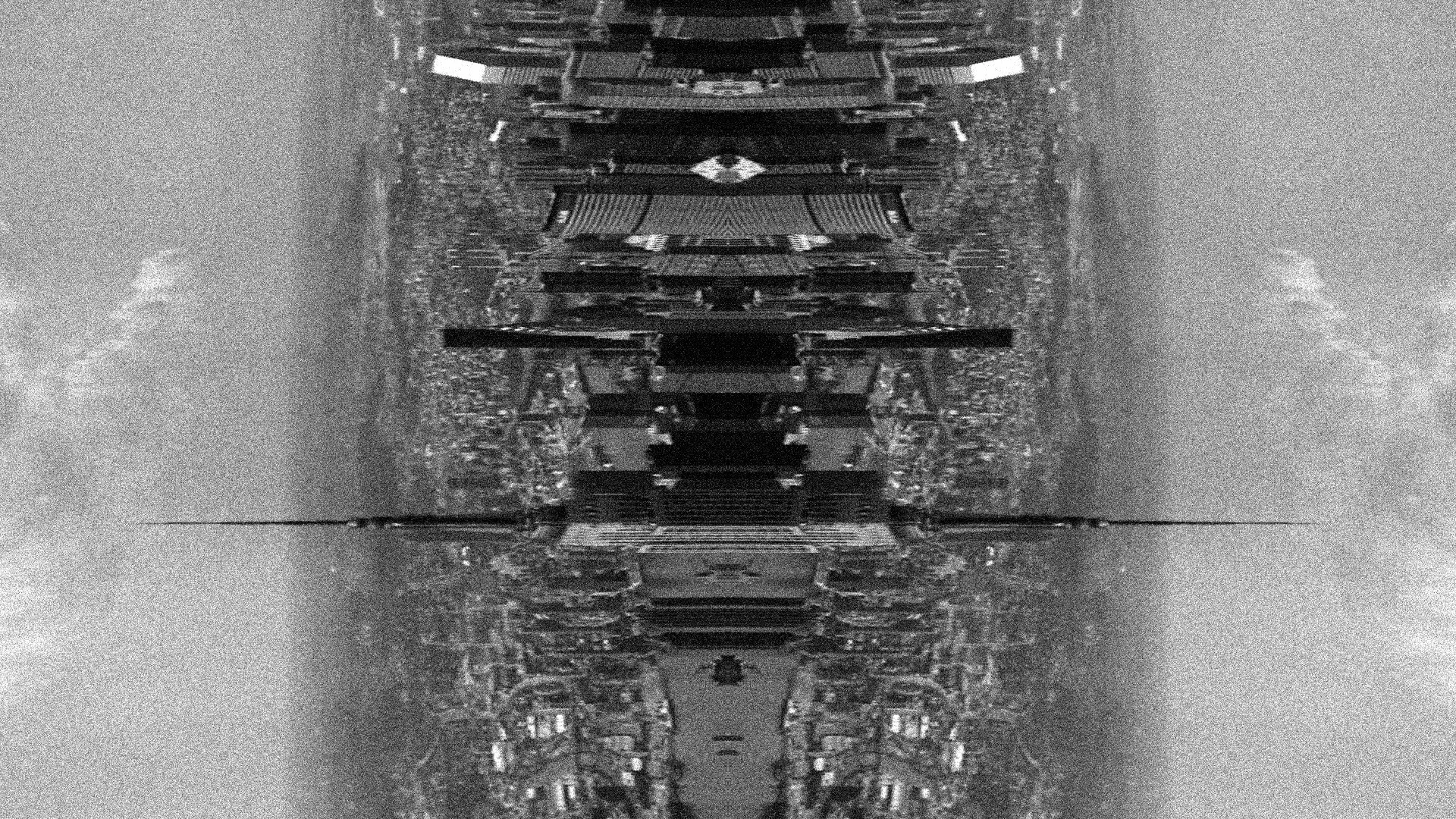“ “Joseph Nechvatal’s Selected Sound Works (1981-2021) is a brain-jarring intermedia collision of post-conceptual art and Minimalist subculture. Experience the next logical step beyond the sustained drones and disciplined intonations of freeform radicals like Cage, Glass, Reich, LaMonte, Maciunas, MacLise, Ono, Jennings, Niblock, Flynt, Gibson, and Branca. Demanding, commanding, and outstanding.””
The Selected Sound Works (1981-2021) cut-ups take the listener on a journey through time; crossing both the cultural references of Joseph Nechvatal and his interest in the encompassing power of noise. This tape, which spans four decades of sound cogitation, explores topics that also punctuated the artist’s writings (Immersion Into Noise, in particular) and visual works. The track Excerpt II from Reckless (1984) reproduces, for example, the sounds of detonations that recall the issues of nuclear weapons that Nechvatal and Rhys Chatham raised in their mid-1980s avant-garde art music performance XS: The Opera Opus. This work crossed various historical and philosophical elements to criticise the massive and disproportionate production of atomic weapons under the Ronald Reagan presidency.
As Nechvatal wrote in his essay “The Look of XS” in Unsound (vol. 3, n° 1), ‘XS resonates not only with contemporary historical images, but also with faint visual references to Pompeii, the cave dwellers, and the 60s. Here the mind is wrestled away from Aristotelian logic by use of elaborate poly-structures, so that we glimpse the image of mass annihilation wrought by militarized technology which now provides the major context for our art and our lives.’ Nechvatal had already dabbled with the theme of nuclear conflict in 1979, when he plastered the walls of a group of buildings in Lower Manhattan with posters, proclaiming “‘Limited’ Nuclear War.”
The symbolic power of the nuclear weapon is addressed in Selected Works through the artistic practices of audio collage, instrumental performance, and sound manipulation. That power allows us to appreciate Nechvatal’s more current preoccupation with the notion of the virus. His viral symphOny, composed over the years, focuses on his fascination with the virus; manifest in his computer-assisted viral paintings, a-life animations, and sound works; that end here with an acoustic journey that pays tribute to Antonin Artaud, with a reinterpretation of Artaud’s radio play, Pour en finir avec le jugement de dieu.
— Nicolas Ballet
•••••
“For me, these Selected Sound Works (1981-2021) tracks are ‘sound stem chains’, a sonic ‘inspirational tool’, not unlike Peter Schmidt and Brian Eno’s Oblique Strategies or even earlier, like the card deck by Marshall McLuhan called “Distant Early Warnings” ... This dream listening takes me back to my childhood experience of sound, kneeling on the rug spinning the dial on a massive floor model short wave radio receiver that was marked with the names of cities across the world; just listening to static and distant broadcasts (DXing) in languages I did not speak.”
— Judy Nylon
“Spanning plunderphonic cut-ups, gestural noise, synthesizer improvisations, and bracing computational abstraction, Selected Sound Works (1981-2021) offers a vivid account of the evolving strategies that have defined experimental electronic music and sonic art across the millenium, showing how one of its most committed artists and theorists— working across the analogue and digital, aural and spatial, human and inhuman— has built a sonic world that seamlessly connects late 20th century ferromagnetic/digital exploration, mass media détournement, and site-specific sound sculpture to contemporary explorations of virality, artificial intelligence, and computational culture in the early 21st century.”
— Charles Eppley
Joseph Nechvatal
Selected Sound Works (1981—2021)
2025
Table of the Elements
[Carbon] 6
EOE-006
Perfect-bound book, compact disc
“When Joseph Nechvatal picked up Antonin Artaud’s Theater and the Plague (1933) in 2021, he was surely looking for tools to understand the social implications of the current plague, COVID-19 and its variant, alongside the many different plagues of his lifetime, whether HIV/AIDS, or the rising tide of computer viruses. All of these are connected by many things (global travel, human/animal land competition, and resource competition), but share a particular interest the structure of mutation. In viral mutations, traces of the original contagion persist even as variants wipe out the beneficial structures of resistance, whether they be antibodies, anti-viral medication, or various forms of avoiding social contact. The structure of this accelerated process of transformation is audible within individual works on this cassette. How to Kill (1986) audibly represents its source and its viral adaptation of fragmented cuts (Janet Jackson’s Nasty). Psychedelic Hermeneutic (1988) translates seventeen seconds of feedback from its source (Jimi Hendrix’s Are You Experienced?) into a minute-and-a-half exploration of feedback. The repetitions and feedings-back performing a near perfect analogue for viral reproduction as well as the bodies’ developing resistance through anti-bodies.
“By 2006, the viral had jumped from recorded sound to a-life synthesis in viral symphony, whose visual analogue, Computer Virus Project II was developed with Stephane Sikora as a C++ a-life program. Without reducing any of these to the direct translation model of data sonification, this cassette perfectly frames the issue of contagion and variation as sonic perceptions. Nechvatal’s lifetime of work in data manipulation, data corruption, and multi-formatted AI/automata model for the past, present and future of viruses. We live now in an era where ‘going viral’ is desirable as a term of widespread cultural imprinting. But usually ‘going viral’ means the thing is unchanged as it spreads. This view separates contagion from transformation, which is at the center of Nechvatal’s practice. If you want to hear what’s gained in the translation, try listening to the source material (Jackson & Hendrix) and Nechvatal’s transformation of it. Or, find the imagery of Computer Virus Project II and listen to its musical counterpart.”
—Hannah Higgins



